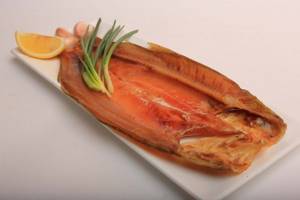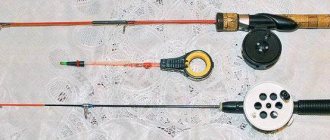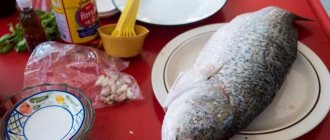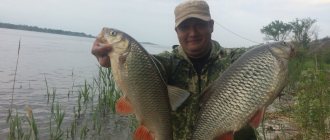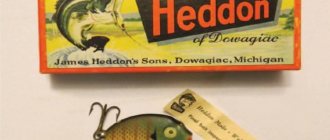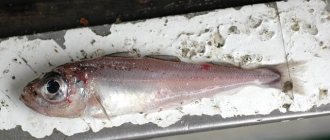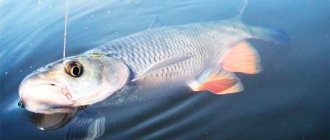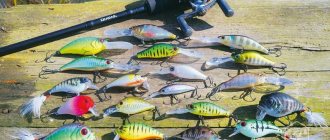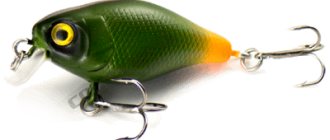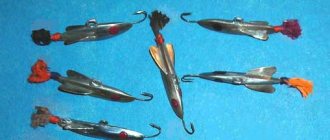The common ide is a medium-sized fish of the carp family and a popular object of recreational and sport fishing. It belongs to the genus of dace, where it forms its own species (Leuciscus idus) from several taxa that have geographical and biological differences. The closest relatives are the Chebachok and representatives of the Dace (Siberian, Kyrgyz, Trans-Caspian, Talas, etc.). The species is characterized by significant age dimorphism, similar to bream. Fingerlings and small 2-3-year-old young animals weighing 400-800 grams are called roaches by analogy with breams. At this age, the fish are very similar to the roach (Rutilus rutilus). Adult individuals have their own characteristic exterior, which is close to another representative of cyprinids - the chub (Squalius cephalus) and to a lesser extent to the asp (Aspius aspius).
Size and lifespan
By the age of 6-10 years, the fish grows in length to 30-50 cm and gains a weight of 2.0-3.0 kg. These indicators are characteristic of trophy specimens, which are now found quite rarely. Under favorable conditions, individual individuals can live up to 15-20 years. It is in adulthood that there is a significant increase in body length (up to 80-90 cm) and maximum accumulation of mass.
The largest ide weighed 8.2 kg and was over a meter (102 cm) tall. Modern standard catches are much more modest. The average weight of fish does not exceed 0.5-1.5 kg, which indicates a significant rejuvenation of the population due to a reduction in the number of places with suitable conditions for long-term development, the growing popularity of sport fishing, and the availability of high-quality gear that can withstand high tensile loads.
Distinctive features of ide
Ide is a rather interesting representative of the carp family. It lives in fresh water, but is capable of living in sea bays. This fish is extremely resistant to sudden changes in temperature. The most popular habitat is a deep muddy river or reservoirs or lakes, but always deep ones.
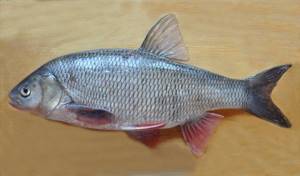
Appearance of ide
The body length of an adult fish reaches 35–50 centimeters, the average weight is about 3 kilograms. Sometimes you may be lucky enough to meet a particularly large representative with a length of about 90 centimeters; such a fish can weigh up to 8 kilograms. The main distinguishing features of the ide are a thick, short body, large greenish-yellow eyes, and medium-sized greyish scales. In spring, it changes its color to a more beautiful one; in the sun, the fish seems to shimmer with either silver or golden shades.
Juveniles of this species are commonly called roaches. They have lighter scales and their fins are pale. The older the fish, the darker and more contrasting it is.
What does ide fish look like?
Small, dense roaches with an elongated snout are characterized by an overall light silver color, pale fins and golden eyes. This description is enough not to confuse young Leuciscus idus with a roach, which has a dark back with a greenish tint, lower mouth, reddish irises and ventral ray feathers, and strongly compressed sides.
An adult ide has other unique external characteristics:
- a thick body with a pronounced arch of the ridge in turquoise and olive tones;
- snow-white belly with a clearly visible keel;
- orange-purple color of the chest, tail and ventral plumage;
- an oblique terminal mouth that does not reach the line of medium-sized eyes with a darkened yellow iris and a large pupil;
- shortened head, behind which there are large gill covers;
- copper-golden sides;
- medium-sized, tightly fitting scales of the cycloid type.
Depending on the characteristics of the habitat, the color scheme of the body may change, but the tiered contrast of shades in the direction from a darker top to a very light bottom is maintained.
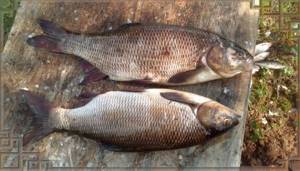
How to distinguish ide from chub
Two species such as ide and chub are very similar, especially if they are small fish. But it’s quite easy to distinguish adult individuals from each other, especially if you hold representatives of both species in your hands, or if you look at them in a photo.
Let's look specifically at how these two types of fish differ from each other:
- Body length. The difference between ide and chub is that the latter is noticeably longer. The average length of the latter reaches 50–80 centimeters.
- Body structure. The body of chubs is not so thick, the head is wider, as is the mouth, and the scales are large, while the ides have much smaller ones. In addition, the chub has a blunter head due to its wide forehead, which is how it actually got its name. His brother has a slightly pointed head shape.
- Color. These fish also differ in the color of their back. The chub has a dark green back, while the ide has a lighter back. There is also a difference between the fins. If in the ide they are slightly reddish, then in its relative they are bright red, sometimes orange.
- Habitat. It is worth considering the fact that chubs do not live in reservoirs with stagnant water, so you definitely won’t be able to catch them there. Unlike their comrades, they do not like depth and are more often found in the shallows; they love places with overhanging bushes.
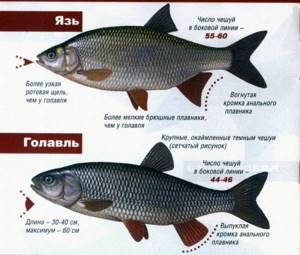
Ide and chub - the difference in appearance
The problem of identifying related species due to their similarity is typical only for inexperienced anglers. Knowledgeable people can easily determine where each fish is, focusing on just a few external signs. This does not take into account the basic color nuances of the color, which can be almost the same in one river or lake.
To learn more:
Description of the chub - a large fish of the carp family
If you do not know how to distinguish an ide from a chub, use the comparative information in the table below.
| No. | External sign | Ide | Chub |
| I | Shape of the outer rib of the dorsal fin | Straight, often concave inward | Convex outward |
| II | Shape of the outer edge of the anal fin | Concave inward | Convex outward |
| III | Size and number of scales in the lateral line | Not large. 55-62 pieces | Large. 42-48 pieces |
| IV | Mouth section | Narrow. Looks straight. | Wide. Looks up. |
| V | Keel on belly | Expressed | Smoothed |
| VI | Body Shape | High | Moderate |
| VII | Head size (relative to body) | Small | Big |
To accurately identify a particular species, it is enough to remember the first three comparative characteristics. Despite the external resemblance to the asp, the ide is easily recognized by its huge mouth, elongated head and pointed fins.
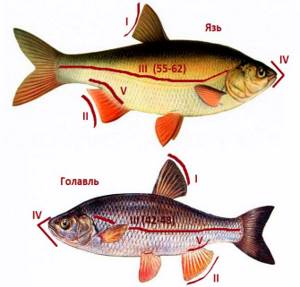
Differences between ide and chub
Many fishermen do not know how to correctly separate chub and ide, and therefore it is worth studying before fishing how they differ from each other:
- The scales of the ide are larger and lighter than those of the chub. The most noticeable difference in color is on the back of the fish;
- The body - in the ide it is laterally flattened, while it is higher in profile than in the chub;
- The mouth of the chub differs from the ide in its large shape;
- The head of the ide is pointed, while that of the chub is more blunt.
Ide - habitats
The species' range occupies almost all of Europe with the exception of the extreme south and south-eastern territories. In Russia, the fish lives in the central part, in the Urals, Siberia and even in the Sokha Republic. The taxon is characterized by sufficient thermal stability against the background of poor tolerance to heated water with a low oxygen content and too cold or fast-flowing streams, characteristic of mountain rivers and lakes. The largest populations live in the rivers of the Azov, Baltic, Caspian and Black Sea basins (with the exception of Crimea).
Despite its freshwater status, the fish adapts well to slightly salted water, and therefore is often found in estuarine areas and bays. Under natural conditions, it prefers flowing deep reservoirs with a slow current and a moderately hard or silted bottom (steppe rivers, lakes, reservoirs, large sewage ponds). A popular fishing object in the riverbed and tributaries of the Volga, Lena, Kuban, Ob, and Ural. The species was also introduced into the United States, where it has successfully established itself in the northeastern states, especially in Connecticut.
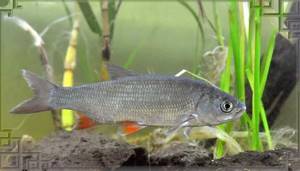
Ide - habits, size, age
Ide is one of the most common fish species of the carp family.
In the northern latitudes of Russia it is as popular as carp and is even an alternative to it. The ide is an omnivorous semi-predator, leading a gregarious lifestyle up to a certain age, organizing flocks based on age. The larger and older the individuals in it, the less numerous they are; large fish prefer to stay alone, forming temporary aggregations only when absolutely necessary - during wintering and during spawning migrations.
It tolerates salinity of water up to 10 g/l, so it can settle in river deltas and in slightly salted sea areas. The usual length of caught individuals is 30-50 cm with a weight of 0.6-2.0 kg, giants weighing up to 5-7 kg and height 90-100 cm.
In Russia, the rules of recreational and sport fishing regulate the minimum size of fish caught; for ide it is 28 cm. Smaller specimens must be released.
The e-book “Fishing for Beginners” will answer all your questions and will be the best assistant in mastering this activity. More details
The average life expectancy of Ya* is from 8 to 10 years. In places inaccessible to humans with a good food supply, such as in taiga Siberian rivers, they live up to 20 years. In some regions of their range, ide is an important commercial object, making up the majority of fish caught.
Lifestyle and nutritional habits
Ide remains biologically active throughout the year, without going into real hibernation. Only a pronounced “deaf season” with severe February frosts, windy weather and thick ice becomes the cause of short-term suspended animation in free deep holes. The constant “partner” in the forced feeding downtime is another all-season glutton – perch, whose life processes slow down under similar external factors.
To learn more:
Pike perch: habits of sea and river species
Young roaches stay in large flocks near the coastal zone. Areas with dense aquatic vegetation, a complex bottom with plenty of shelter, and snags are selected as permanent locations. Large individuals are very cautious, afraid of noise, and love safe, wide reaches with a slow current and considerable depth. At the same time, they avoid walls made of reeds and “windows” among water lilies, avoiding encounters with large pike.
Beginner fishermen are interested in knowing whether the ide is a predator or not in order to select a catchable bait. Among peaceful carp representatives, only the asp has the exceptional status of a carnivorous “white crow”, which in the gastronomic aspect gives preference to the grown-up fry and underyearlings of its own and other species. During the hunt, the fast-moving fish quickly catches up with a medium-sized prey, crushes it with a blow of its tail and instantly swallows it thanks to its huge mouth.
The ide is a universal eater with a semi-carnivorous lifestyle, which, depending on the seasonality and characteristics of the food supply, can behave as a benthophage or planktonophage, feeding from the bottom or surface, respectively.
The main diet includes:
- zooplankton, rotifers, daphnia, brine shrimp (at the young roach stage);
- crustaceans, mollusks, leeches, tadpoles;
- cereal grains and legumes, corn, young shoots (in warm water);
- worms, bloodworms, chironomid larvae, dragonflies and caddisflies;
- mayflies, beetles, grasshoppers, hymenoptera and other insects falling into the water.
At a body length of 15-20 cm, moderately predatory tendencies begin to appear. The object of the hunt is the fry of gudgeon, bleak, roach, and crucian carp. Thanks to such an energy-efficient food additive, fish are freed from a key behavioral disadvantage characteristic of herbivorous representatives of the ichthyofauna - a constant feeling of hunger amid a round-the-clock search for food.
Characteristic features of ide and several principles of distinguishing this fish from chub, examples, photos
What fisherman doesn’t know this silvery beauty with a bronze head and bright crimson fins!
The favorite habitats of this beautiful fish are the dense thickets of the lake, coastal water near a steep ravine, and a place under overhanging tree branches near river pools.
In general, this fish lives everywhere. At the same time, most fishermen consider it peaceful, and therefore try to fish with a traditional fishing rod attachment with a float.
A more successful catch of ide occurs on a spinning rod with predator bait.
If the ide misses during an attack or senses a catch, he will definitely hide. Since he has excellent eyesight and hearing , he senses danger and hides at the bottom. That is why for successful fishing it is necessary to camouflage well and maintain silence.
Appearance
The ide fish, a photo of which is on the Internet, in adulthood can reach a size of 53 centimeters and a weight of 2.8 kilograms. Sometimes you come across ninety-centimeter individuals that weigh about 8 kilograms. This representative of the underwater world can live up to twenty years. The ide has a thick body and a short head. The opening of the mouth is oblique and small.
In spring, the fish begins to acquire a metallic sheen , and the gill covers give off a golden color. Under the rays of the sun, the scales can shimmer in different shades or become stained. The lower fins are colored red, and sometimes the upper ones too.
The back of the ide is bluish-black, and the body and sides are white. The eyes are greenish-yellow with a small dark spot. Externally, this representative of the ichthyofauna resembles a chub, as you can see by looking at the photo.
Where does ide live?
This fish is considered an inhabitant of fresh water reservoirs, but it can also be found in slightly salted bays. It does not tolerate too cold water and strong running currents.
Most often, this fish is caught in deep-water rivers on a clayey and silty bottom .
The favorite places for this representative of the ichthyofauna are coastal bushes, whirlpools and bridges, where the current is very slow.
As a rule, ide is found in European and Siberian waters, with the exception of the southern regions of Europe. Very good fish are caught in the rivers that flow into the Caspian and Black Seas.
It is especially often caught in a flowing pond, reservoir, quiet backwater and bays - where there is a very weak current and a very muddy bottom. In summer, small fish rise higher, and therefore they can be observed while playing on the surface of the water.
Many people manage to capture this in photos. The ide, which is larger, goes down a little lower.
What do fish eat?
Since ide is omnivorous , its diet includes bloodworms, worms, crustaceans and mollusks. In summer it feeds on aquatic vegetation and insects, as well as young animals. In autumn, this representative of the ichthyofauna will not refuse small frogs.
Since the fish is very shy, for good fishing you should properly camouflage yourself, for example, fish from a boat. In addition, fishermen often use bait and bait. In spring, fish bite in the morning for about an hour and a half, and in summer and autumn they can bite for up to three hours in a row. The best catch can be obtained in cloudy times or with short rain in the heat.
After the spring spawning, ide can be caught with worms, and in the summer the following are used as bait:
- Bark beetles;
- Shells;
- Dragonflies;
- Caddis flies;
- Corn.
You can feed this representative of the aquatic world with ant eggs and maggots about a couple of hours before fishing.
How does reproduction occur?
The beginning of spawning occurs after the temperature warms up to 120. In the middle regions of Russia, spawning occurs at the moment of subsidence of the flood, when the rivers return to their banks. As a rule, this period occurs at the end of April - beginning of May . During spawning, river ide migrates upstream in order to select a favorable place for laying eggs.
The fish considers the deep-sea rocky bottom with underwater snags and hummocks to be their favorite places. The number of males exceeds the number of females. The fish goes to the spawning site in a large flock of hundreds or thousands of individuals.
The main difference between males during this period is the presence of many tubercles on the scales. On average, ide is capable of laying about 70,000 yellow eggs, and the larvae hatch already on the tenth day.
Differences between ide and chub
Many fishermen do not know how to correctly separate chub and ide, and therefore it is worth studying before fishing how they differ from each other:
- The scales of the ide are larger and lighter than those of the chub. The most noticeable difference in color is on the back of the fish;
- The body - in the ide it is laterally flattened, while it is higher in profile than in the chub;
- The mouth of the chub differs from the ide in its large shape;
- The head of the ide is pointed, while that of the chub is more blunt.
Useful properties of ide fish
Freshwater fish of the carp family have long been valued as a source of vitamins and protein. The meat of this fish is enriched with phosphorus, calcium, magnesium, chlorine, iron, nickel and molybdenum.
It is easily digested by the stomach, and therefore it is often prescribed baked. Experts recommend consuming ide when patients are being treated for gastritis and stomach ulcers.
Fish is very useful for heart disease .
The main value of this fish is considered to be the unique ratio of protein to amino acids, the most valuable of which are lysine, tryptophan, taurine and methionine.
Ide meat also contains very important phosphorus and calcium, and therefore its constant consumption can protect a person from osteoporosis and strengthen bones.
To stimulate digestion, it is useful to eat fish soup made from this fish. The substances in the broth from this fish help the gastric juices to be secreted more intensely.
Source: https://ulov.guru/po-porodam-ryb/osobennosti-ryby-yaz-i-otlichiya-ot-golavlya-s-primerami-foto.html
Subspecies of ide
The basic, “common” taxon is Leuciscus idus. It is he who inhabits all favorable bodies of water and determines the characteristic appearance of the fish. There are also several unique forms that arose under the influence of humans or climatic and geographical features:
- Orfa, or golden ide (Leuciscus idus var. Orfus) is an artificially bred variety for pond fish farming and decorative keeping in home reservoirs. It has a dorsal fin with an increased number of rays - 10-12 versus the standard 8-9. In the cold season it is inactive. Overwinters in pits along with carp and carp. It is distinguished by a pronounced golden or red color, often with pinkish or scarlet tints. It grows up to 50 cm in length and weighs 1.5-2 kg.
- Turkestan (Leuciscus idus oxianus) is a small subspecies that lives in the Aral Sea basin. It is found in the middle reaches and lower reaches of the Amu Darya and Syr Darya. The body length does not exceed 25-30 cm and weighs 700-900 grams. It has small scales - 52-55 pieces in the lateral line. The main color corresponds to the base taxon.
To learn more:
Barbel fish: description, distribution and methods of fishing
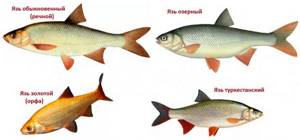
In various bodies of water, fish are capable of forming endemic races, which are characterized by local variations in shades and body shape, but this is not a sufficient factor for their identification into a separate taxon. For example, in 9 out of 10 cases, river ide will be lighter and slimmer than its pond or lake “brother.”
Features of asp
Asp is the largest representative of the carp family. Its second name is sheresper. Its body reaches 80 centimeters in length; this fish weighs on average 10–12 kilograms. The eyes of the Sheresper are always bright, pure yellow with a small green stripe.

Appearance of asp
An interesting feature of the asp is its way of life. Unlike its two brothers, this is a daytime fish. This means that he sleeps at night and you definitely won’t catch him during night fishing. These fish go hunting exclusively during the day. The most distinctive feature of the asp is its anatomical feature - a blunt rib that is located on the belly between the fins.
Reproduction
The usual spawning time is in the middle or end of spring, but can vary depending on climatic conditions, mainly on the water temperature, which should reach +6-8°C. Spawning of ide is accompanied by short migrations within the boundaries of its native reservoir. On rivers this means going upstream, entering tributaries, creeks and eriks. On lakes and ponds - movement to shallow areas and estuary sections of inflowing watercourses and streams.
Spawning grounds are always located in flowing places with an abundance of bottom solid substrate or water bodies (stones, snags, supports, piles, metal structures, etc.). A biological feature of large orange eggs with a diameter of about 2.0 mm is a thick sticky shell, which ensures reliable attachment to any durable surface.
Sexual maturity of ide occurs at the 3-4th year of life with a relatively small weight of 150-250 grams. Short spawning occurs very amicably and takes only 2-4 days. One female forms several clutches of 10-25 thousand eggs each, which significantly increases the chances of survival of the offspring both with a sudden loss of water and with an abundance of natural predators. Optimal incubation of masonry requires a temperature range of +10-14°C and a sufficient flow of oxygen. The larvae hatch in 2.5-3 weeks. When the fry swims, it immediately hides in the coastal vegetation, where it begins to actively feed on zooplankton.
Ide, chub, asp - differences and photos
Ide (roach), chub (smut) and asp (sheresper) belong to the Karpov family. Visually, they are very similar, which causes confusion among novice fishermen. However, these are different fish, there are still differences.
External differences of ide
We recommend watching this very useful video:
What makes ide stand out:
- thick and short body;
- green-yellowish eyes or yellow with a dark splash at the top;
- medium-sized gray scales;
- in spring, the color becomes more eye-catching - the fish shimmers with silver and golden colors under the sun's rays;
- the fins on the back and tail are dark, but sometimes reddish, the lower and lateral fins are always red;
- the back is black and blue, the sides are whitish, the belly is silver.
Rice. 1. What does ide look like?
External distinctive features of the chub
This fish is very easy to confuse with ide, especially small specimens. However, adult chub specimens still have individual characteristics. How to distinguish from ide:
- the back is a darker shade;
- elongated head (his brother’s head is slightly blunt);
- big eyes;
- scales with black inclusions at the base;
- wide and round mouth;
- all fins are gray (except for the anal and ventral ones, they are reddish), the lateral ones are quite powerful.
Rice. 2. What does a smut look like?
Visual distinctive features of asp
How to distinguish an asp from its fellows:
- at the top and bottom of the mouth there are sharp bends in the opposite direction, which allows the fish to firmly grasp the prey;
- silver color;
- the fin on the back and tail is grayish with a dark edge, the anal and pectoral fins are reddish;
- the tail is uneven, the upper part is slightly shorter.
Rice. 3. What does an asp look like?
Differences in behavior and environment
There are differences not only in appearance, but also in the behavior of fish.
Features of asp
The most active is sheresper . Due to the peculiarities of the structure of the digestive system, it needs year-round nutrition.
This predator is very impatient; it cannot stay in ambush for long. Seeing prey, it instantly attacks. It has an excellent sense of smell and senses food tens of meters away. It does not attack large inhabitants of the reservoir, because his mouth is not very big.
When catching asp, it is recommended to use artificial bait and live bait no more than 5 cm.
The gear should have a thin leash; if it is thick, there is a high probability of no bite. You can use a large beetle or grasshopper as bait.
The asp prefers the current . Even spawning occurs in open areas. Therefore, it is recommended to catch this fish in estuaries, narrow channels, rapids, dams, etc. The predator prefers to hunt fry near a steep bank, stones, and flooded snags.
Features of ide and chub
Ide and chub are less active representatives of the Karpov family. In spring they prefer to stay and feed at the bottom. Therefore, at this time of year it is better to use deep tackle. When the water warms up, they float to the surface and catch insects with their mouths. The roach and the bunt have different pecking patterns.
The first fish grabs the bait with caution, and the chub tries to catch the bait right away. He has a lot of strength and often tries to pull the rod into the water, so if it is left unattended, it needs to be securely fastened. It can be caught in places with a current or where the stream is divided into two parts, the water is relatively calm.
Ide prefers quiet areas. You can get a good bite in thickets or where branches hang over a pond.
Large specimens are also found among driftwood.
Taste characteristics
Asp meat is recognized as the best. However, it has one significant drawback - bonyness. You can get rid of this by salting. Under the influence of salt, the bones soften. If you smoke the fish again after this, they will not be noticeable at all.
It is recommended to make minced meat from asp meat and then make cutlets. This fish goes well with pork, so when passing through a meat grinder they can be mixed.
Ide meat has a muddy smell, but not a very strong one. To get rid of it, the fish must be soaked in salt water. It is best to fry the roach, this will soften its bones.
Chub meat is considered dietary. However, it has a strong muddy smell, which many people do not like. To get rid of it, fish can be marinated in lemon juice with garlic and herbs. After this, prepare any dish from the chub.
Rice. 4. Ide, chub, and asp make very tasty dishes, even despite their bonyness and the smell of mud. After processing, these shortcomings can be eliminated. That is why fishermen love them so much.
As it became clear, ide, chub and asp have many differences, especially visible in adult individuals. In addition to their appearance, they also differ in their behavior, so the technology for catching them will be different, which must be taken into account when going fishing.
Source: https://1poklev.ru/zhereh/yaz-golavl-zhereh-otlichiya
Tackle and bait
To successfully catch ide, a wide variety of gear is used (see table).
| Gear type | Rod | Line, mm | Loading capacity of the float/weight of the sinker/weight of the feeder, g | Hook/spoon | Spinning Reel Size |
| Float | 4-6 m, semi-parabola | 0,18-0,25 | 1,5-3,0 | №№ 8-10 | — |
| Bologna | 4-6 m, semi-parabola | 0,18-0,25 | 1,5-4,0 | №№ 8-10 | 2000-3000 |
| Donnaya | 2-3 m, test 30-100 g | 0,28-0,35 | sinker – 25-70 g | №№ 6-8 | 2500-4000 |
| Feeder | 2-3 m, test 30-100 g | 0,28-0,35 | feeder – 25-70 g | №№ 6-8 | 2500-4000 |
| Spinning | 2.5-2.8 m, medium action, test up to 20 g | 0,2-0,3 | — | Small poppers, spinners and vibrators No. 00-02 | 2000-2500 |
Find out more:
Tench: description of fish, habitats, spawning and fishing methods
You can also use fly fishing equipment consisting of a 2.5-3.5-meter medium-action rod, which is complemented by an inertial reel, a floating cord, 60-meter backing, a leash 0.1-0.2 mm thick, and a hook with a long shank No. 6 -8 or front sight.
The best baits for ide are:
- naiad, grasshopper, caddisfly;
- worm, maggot, bunch of bloodworms;
- peas, pearl barley, oats, dough, bread;
- furrow (larva) or adult cockchafer.
In winter, fishing is carried out using a vertical spinner (“clove”) or a jig. The bait is bloodworms, maggots, burdock moths or a “sandwich” of their combinations.
In warm water it is important to use bait. Millet porridge with the addition of fragrant vegetable oil (sunflower, rapeseed, flaxseed, hemp) has proven itself well. It is best to fill the feeder with special industrial mixtures for carp species.
Fishing Features
Both amateurs and athletes show interest in catching ide. Moreover, you can catch this type of fish all year round. Fish may not bite only in severe frosts and during the spawning period. You can fish with any fishing rod. The most effective include:
- wired;
- Bolognese;
- flywheel;
- spinning;
- match.
In winter, the fisherman will have to stock up on special gear that will prevent the float from freezing to the ice. The highest feeding activity usually occurs a week after the completion of spawning. This period usually lasts about three weeks.
When choosing bait, it is important to consider that the ide has a small mouth. It is better to use those that are no larger than size two. The length of the spoon should not exceed 4 cm.
The description of the method of catching this fish requires adherence to special recommendations. So, you need to fish in silence, trying not to make unnecessary noise, since the ide is a very shy fish. It is advisable to camouflage yourself with the surrounding area. For float fishing, you can use plant-based baits and various wobblers.
Interesting! In freedom he is very strong and agile. Once hooked, the fish begins to twist in every possible way and jump out of the water. Often he manages to cut the line with his fin and free himself from captivity.
Useful properties of ide
It has excellent taste and good nutritional value of 116 kcal per 100 g of fresh product. The fillet contains many important elements that ensure the normal functioning of the body:
- vitamin PP (3.2 mg);
- potassium (235 mg), calcium (80 mg), magnesium (35 mg);
- sodium (100 mg), phosphorus (210 mg), iron (1.0 mg);
- molybdenum (4 µg), fluorine (430 µg), chromium (55 µg);
- proteins (19.0 g), fats (4.5 g), ash (1.1 g);
- essential amino acids (lysine, tryptophan, taurine).
Boiled and jellied dishes, as well as carp soup (ear) are suitable for dietary nutrition and are recommended for people with stomach, heart and kidney problems. Despite the fact that the ide fish is bony, this gastronomic drawback can be easily eliminated with proper preliminary preparation.
To do this, frequent transverse cuts are made from the ridge to the abdomen (at a distance of 5 mm), which cut through the bones and allow them to soften as much as possible during further cooking. Another option is to make diagonal cuts, creating a continuous diamond-shaped pattern.
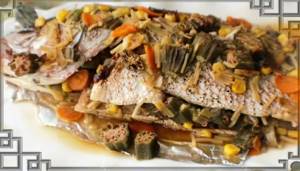
Ide caviar is widely used in cooking, which is well salted, fried and baked. Harmful factors associated with the consumption of this type of fish are typical for any freshwater ichthyofauna - these are individual intolerance (allergies) and the possibility of the presence of dangerous parasites (nematodes, cestodes, trematodes). To definitely avoid infection with helminths, you can use preliminary long-term freezing or heat treatment at a temperature of +60°C and above.
Where are ides and roaches found?
The habitats are vast, there are many bodies of water where ide is found, it is found in almost all European countries and in most of Siberia. In Russia, ide fish is very common and is found almost everywhere, with the exception of the Far North itself. They are most numerous in the rivers of the Volga basin and in central and eastern Russia. These representatives of the carp family are not found in Southern and Southwestern Europe. And in Transcaucasia they are practically never found.
We suggest you familiarize yourself with How to breed carp in a pond at your dacha
The ide avoids mountainous and cold rivers with fast currents and prefers deep rivers with a moderate and quiet current, and also loves very quiet waters, river backwaters and flowing lakes, where fishing for ide with a spinning rod can be very successful. If you compare the habitats of two fish that are very similar in appearance, the ide and the chub, then you can immediately take it as a rule that where there is a lot of ide there are few chub and vice versa, these fish live in some kind of contradiction. And despite the fact that ide is a less fastidious fish, so in many places it is slowly replacing the chub.
This fish is one of the most hardy and easily tolerates sudden changes in temperature, and even water pollution without harmful consequences. It does not go into complete hibernation and can be caught almost all year round, with the exception of the period of severe winter frosts, one or two months, when they are inactive and stand almost motionless.
With the first signs of spring, in some places as early as February, they begin to leave the deep places where they spent the winter and approach ice holes and edges, where they can gather in large flocks. In the spring, the ulcer migration into the rivers upstream begins with the opening of the river, before all the fish.
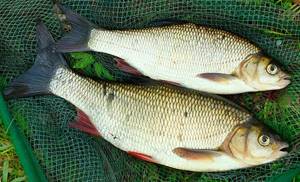
When ice drift begins, the river floods and overflows its banks, the ide fish stays near the banks, but does not leave the channel, although it can enter floodplain lakes if they are connected to the river by channels. The channels are cleared of ice earlier and enter the banks earlier, so they readily spawn in them. To reach the spawning site, ides from the lower reaches of rivers can travel considerable distances up the river, about ten kilometers in one day, sometimes stopping at convenient places to rest.
Moving up the river, they can jump over obstacles, such as nets or low dams, jumping out of the water to a height of 70 cm to reach the best place for spawning. Having spawned, they go into the depths, roll down from the rivers to their summer camps, and after a few days they go out onto the sandy shallows to fatten.
They finally gather at summer camps in lakes, bays and ponds, 3-4 weeks after the completion of spawning, depending on the water level in the river after the flood. If there is little water, they leave, but if the water is at a good level, for example in large navigable rivers, they can stay and live there. But at the same time, as in rivers, streams, flowing ponds and lakes, the ide fish chooses places for its habitat that are deep and always muddy, avoiding sandy and rocky places.
The ide fish is very careful; it prefers places inaccessible to a seine or dragnet, holes filled with snags with an uneven bottom. Small roaches are not so whimsical and stay at shallower depths, usually in the grass, sometimes together with roaches. They come out of the pits to feed mainly at night in shallow places and even on riffles; they can stand in the grass near the current, which brings them food.
Many large individuals almost never leave the pits and emerge from them during sudden changes in weather or during large floods or after heavy rains. In general, any increase in water, be it the opening of sluices or after rains, entices them to move upstream in search of food washed away from the banks, and when the water recedes, they go down again to their places.
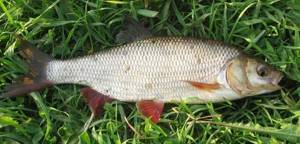
And for roaches living in ponds and lakes, rains do not affect their way of life, there they are more sedentary, but they still go to the shallows to feed, not only at night, but also during the day. And on large lakes they can often be seen near the shores after a storm, where they look for food washed up by waves from the shores and from under stones.
With the beginning of winter, on freezing rivers and lakes, tongues under the ice can sometimes be found in shallow places, even if the middle of the river or lake has not yet frozen. It is likely that during the first ice the fish have enough air, it is stored in bubbles under the ice, and they do not rush to the holes and open water for oxygen.
Appearance
Let's figure out what ide looks like? The length of the thick body of an adult fish varies from 35 to 50 cm, and especially large individuals can reach a length of 90 cm. At the same time, the average weight is up to 3 kg , but there are also record holders, ides up to 8 kg! Moreover, representatives of the species in central Russia weigh about 1.5-2 kg. But in clean and oxygen-rich artificial reservoirs, the fish reaches very impressive sizes.
You can recognize a fish by the following signs:
- Thick body.
- Shortened head.
- Small slanted mouth.
- Large eyes.
- Usually gray in color
The body color of the ide may vary depending on the time of year or the age of the individual.
Adult individuals have a gray, metallic body color with golden “cheeks” and head. At the same time, in the sun, the color can change , becoming either completely dark or silvery-golden. The sides are close in color to white, creamy yellow, the back is black with a blue tint. The reddish-crimson color is characteristic of the lower fin, less often – the caudal and upper fin. Some fish have a much darker dorsal and caudal fin - silver-gray with a purple tint. The scales are medium in size.
The color of the eyes is yellow or yellow with a tint of green, the shell of the eyes is a characteristic bright orange color.
Young individuals , which are usually called roaches, are distinguished by a lighter body color, silver, and their fins are much paler. The older the fish gets, the more contrasting color its body acquires.
Let's figure out how to distinguish the ide fish from the chub, which is similar in appearance. The chub is a freshwater representative of the carp family, with a flattened massive head and large scales. The following signs will help you distinguish ide from chub:
- Lighter color on the back.
- Narrower head. In the ide it is slightly pointed, in the chub it is more blunt.
- The scales are smaller in size.
- The mouth is narrow.
- The chub has a larger mouth.
- The body of the ide is somewhat flattened on the sides, which is not the case with the chub.
Also, the ide fish, the description of which is presented above, has several similar characteristics with the roach, but differs from the latter in its lighter back, yellow eyes and scales - they are smaller in the ide.
There are a number of differences between chub and asp that will help the fisherman avoid making an annoying mistake:
- The asp has a lighter silver-gray color.
- The anal fin of the asp is wide, while that of the chub is convex and narrow.
- A prominent lower jaw characterizes the asp, while in the chub both jaws are identical.
Knowing these signs will allow you to correctly identify the caught fish.
Habits
The fish is a cautious fish, preferring to live in schools, often large ones. But large individuals prefer to live alone. Young roaches choose coastal zones to live , while adults prefer to live in the depths. The ide fish spends the winter at depth, hibernating together with the perch. Under the ice in spring, fish gather in schools and begin to approach the shores. When the river opens up, the flocks rise upstream, staying near the banks, without leaving the riverbed into the floodplain, except in floodplain lakes connected by channels with the river.
The spawn starts early. The eggs located in the riverbed do not die during the decline of spring waters. Having spawned, the fish go to the depths, after which, after several days, they visit the sandbanks to feed.
The lake fish ide often rises upstream more than 150 km.
That is why in the upper reaches of the river in spring it is possible to get most of the catch, while in the lower reaches the catch is minimal.
But river ides immediately after spawning go down the river to those areas where they are accustomed to living in the summer. The migration takes place during the day, not in schools, but individually; in the evenings, the fish gather at depth and go aground to fatten at night. While the water is cloudy, the fish have the opportunity to feed all day long. But gradually the water enters the riverbed, becoming less turbid, and the fish stops feeding during the day and begins to fatten only at night.
About a month after spawning, the fish finally returns to their summer habitat.
Despite the fact that fish are not classified as predators, once they reach a large weight, ide begins to eat smaller fish. Comes out to feed at night .
Catching chub and ide
Chub and ide are usually called white predators. The asp also falls into this category, but today’s article is not about it.
Although both fish are associated with fishing near the surface of the water, in the spring both predators stick to the bottom layers, which is due to the peculiarities of the distribution of food organisms in the period under consideration. Predators come to the surface when the water warms up, when various bugs begin to fall into the water, and the fingerlings rise into the warm heated layers of water.
In spring, it is preferable to fish with bottom gear . The ide is a strong fish, but its bite is cautious. The chub is capable of breaking the leash even at the moment of biting, so the feeder for the chub must have sufficient power. On the shore, it is advisable to install it so that in the event of a sharp bite it does not jump into the water. A large chub is capable of completely pulling the rod into the water. An ide feeder is a more delicate tackle. Thick leashes can cause a lack of bites, so an excessive reserve of power is not needed here.
In the spring-summer period, both predators are successfully caught overhead in wiring . The main bait is a beetle or grasshopper. The use of a large beetle allows you to “filter out” the runts, and a grasshopper may also catch outright small things. It is worth noting that the mouth of the fish in question, especially the chub, is quite large, so small things can only be “filtered” with large beetles. The cockchafer has gained the most popularity, but the fishing period for it is short.
White predators are also caught using artificial bait. Wobblers for chub should be relatively small in size and have an active game. Fishing for chub requires a certain amount of caution from the angler, especially if you have to catch chub at short distances.
It is important to note that the predatory instincts of the ide are less pronounced, although it can thin out a school of fry. Therefore, wobblers for ide should imitate an insect or a very small fish.
Catching ide with a spinning rod Ide with a spinning rod - habitats, fishing for ide by season and bait. How to catch ide with a spinning rod, seasonal features of fishing and what baits are needed for ide.
Habitats of ide and chub
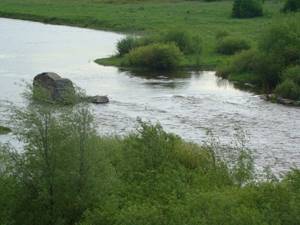
When fishing for chub or ide on the river, there is also a difference in the choice of fishing location. The chub boldly comes out onto the stream, “grazing” under the rifts and in areas where the main stream splits into two streams, forming an area with relatively calm water between the streams. The ide prefers quiet places, which can be indirectly judged by its wider body, but we will consider this below. Promising places for catching ide will be quiet plantations of water lilies, under which it collects worms and fry.
A good place for fishing for ide will be areas under branches hanging over the water, especially if the place is quiet and the current appears a few meters away from the promising area. This predator also loves sparse piles of snags. This is especially true if you plan to catch large ide. In the location under consideration, it is necessary to fish not only the surface horizons, but also the bottom ones, since here large ide can ambush the fry.

Spawning of ides.
sexual maturity at 2-3 years, with a size of 20-25 cm and a weight of 250-300 g, in northern latitudes 1-2 years later. They are among the first to spawn in early spring, after the flood subsides, as soon as the water warms up to 6-7 Cº and the river is completely cleared of ice.
In Central Russia, spawning occurs in the second half of April, in the south of the country - at the end of March, in regions with a cold climate - in May. According to popular belief, the tree is ready for reproduction when the first buds bloom on the birch trees. During this period, river ides form schools, gathering in them according to age, and begin a pre-spawning move up the river, in search of places for reproduction. From large, navigable rivers, they move to shallow tributaries, choosing for spawning grounds rocky rifts with a depth of 30 to 70 cm with the remains of last year’s vegetation, which serves as a substrate for them to spawn.
During spawning, which usually occurs in the evening or early morning hours, males frolic, jump out of the water, and swim near its surface.
Spawning is fleeting, takes no more than 2-3 days, is carried out in one step and occurs according to seniority - the oldest spawners spawn first, the first-born roaches spawn last. After spawning, the ides, one by one, roll down to their previous camp sites.
During spawning, each female spawns from 40 pieces. up to 150 thousand eggs. On average, an individual weighing 1.5 kg lays about 70 thousand eggs. After 7-10 days, larvae appear from the eggs, which weigh motionless for another 3-4 days, holding on to stones and plant remains due to an adhesive secretion produced by special cement glands. Then, breaking away from their temporary shelters, the fry begin to swim and feed on their own, and until then they live off the mother’s yolk sac. They do not leave the hatching site for another 3-5 days, and then move to less dangerous places in the biotope - to the coastal zone.
For breeding, lake ides enter the nearest mouths of flowing rivers or go out into shallow coastal waters provided with thickets of reeds. After spawning, they go to the depths and after a couple of days begin to feed intensively around the clock, compensating for lost calories.
How to cook?
Many housewives love to cook asp. This is because it is easy to prepare, and its meat has a pleasant, delicate taste.
How to fry in a frying pan?
You can fry an asp in a frying pan quite quickly. You can cook it this way whole or in pieces. In the second case, the fish is cut into pieces, salted and spices are added to taste, and then rolled in flour. Pour a small amount of vegetable oil into the frying pan and lay out the pieces of fish.
To form a crispy crust, the fish is first cooked over high heat on both sides, and then the heat is reduced and the asp is left under the lid until it is ready.
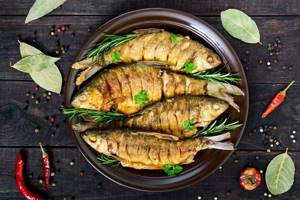
How to cook in a slow cooker?
It will take 45 minutes to cook the asp in a slow cooker.
First, the onion, cut into rings or pieces, is fried in a bowl. Next, pieces of fish rolled in flour are added to it. At the same time, prepare the sauce: mix 4 tbsp. kefir, 2 tbsp. mayonnaise, salt and spices to taste. Cover the asp pieces with this sauce and pour half a glass of water. Then set the “Baking” program and cook for 30 minutes.

How to bake in the oven?
Asp baked in the oven turns out very tasty. To prepare fish in this way, it is first cleaned and washed. Then salt, pepper and wrap in foil. You can put onions or garlic in foil (this will imbue the asp with a special taste and juice).
Bake the fish in foil for 30 minutes at 200 °C. Fish prepared in this way has a particularly delicate taste.
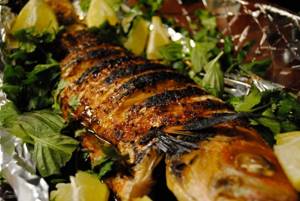
How to smoke?
Smoked asp will be a great addition to any table.
Before you start smoking, you need to prepare the fish. This process includes 3 stages:
- Cleaning and cutting. Produced in a standard way.
- Salting in brine. The brine is prepared at the rate of 150 g of salt per 1 kg of fish. You can also add spices to the brine: pepper, thyme, curry or anise. For small fish, salting lasts 3-4 days, and for large fish - at least a week.
- Soaking and drying. Small fish are soaked in water for about two hours, and large fish for a day. After this, the carcasses, covered with gauze to protect against midges, are hung in a well-ventilated area overnight.
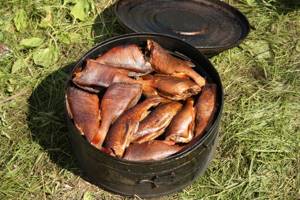
Hot method
Hot-cooked fish has a loose structure and delicate taste. Prepare it at a temperature of 80-100 °C for 40 minutes.
First of all, sawdust from fruit trees is poured into the smokehouse. Place the carcasses on the grill so that they do not touch each other. The smokehouse is covered with a lid and sent to the fire. 40 minutes are counted from the moment the smoke starts. Afterwards, the smokehouse is removed from the heat and the asp is left in it for another 30 minutes. After this time, the finished fish is ventilated in the fresh air for several hours.
Cold way
Cold smoked asp has an interesting golden hue. It acquires this color during the cooking process.
To cook fish you will need a smokehouse, which you can make yourself. It is also permissible to use a smoke generator.
An important condition is that the smoke temperature should not exceed 40 °C. Otherwise, you won’t end up with a cold-smoked asp, but a half-cooked fish with carcinogens.
After all stages of preparation, the fish is hung in a smokehouse, maintaining a temperature of 25-28 ° C. The minimum smoking time is 8 hours. Next, you should evaluate readiness and, if necessary, increase the cooking time by a few more hours.
How to pickle?
To salt an asp, it is first cleaned, gutted and washed under running water. Next, the carcass is divided into pieces, and each piece is cut in half along the ridge. After each piece is generously rolled in salt, then left for 4 hours at room temperature. After time, each piece is washed from salt.
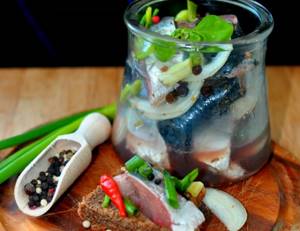
At the same time, peel and chop the onions and sterilize the jars. Then they put the food in the jar in layers: a layer of onion, a layer of asp, pepper and spices, again onions, asp and spices. This fills the entire jar. At the end, add a glass of sunflower oil to the jar, close the lid and put in the refrigerator for 8-10 hours.
You can also make very tasty salted herring from asp.
How to dry?
The asp is dried as follows. First, the fish is gutted and washed. Afterwards, the carcass is strung on twine through the eye and rolled in salt or soaked in brine. Salting should last from 3 to 7 days depending on the size. The fish is then taken out, washed, dried and hung to dry outdoors in the shade.
For small fish, 2 weeks will be enough for drying, but for large fish, at least 5.
It is necessary to protect the fish from flies and midges. To do this, it should be wrapped in gauze on all sides for the first 2-3 weeks of drying, and after that the gauze can be removed.
